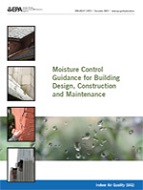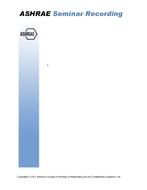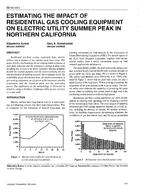This paper gives an overview of sources of indoor particulate matter (PM) and its effects on occupants. Studies indicate that outdoor PM contributes to indoor PM, yet a large fraction of indoor PM is generated indoors. The ratio of indoor to outdoor PM concentrations (I/O ratio) varies substantially due to different indoor conditions and PM spatial distributions. Real-time investigation using multiple point sampling technique is needed for better understanding of PM spatial distribution. Particles smaller than 10 mm in aerodynamic diameter, which are referred to as respirable particles, are primarily responsible for respiratory dysfunctions in human occupants and animals. In addition, PM is often a major carrier of other pollutants, including radon and odor.
Units: Dual
Citation: ASHRAE Transactions, vol. 109, pt. 2
Product Details
- Published:
- 2003
- Number of Pages:
- 12
- File Size:
- 1 file , 110 KB
- Product Code(s):
- D-20909


